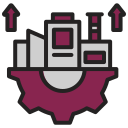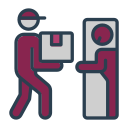
Market intelligence is the process of gathering and analyzing information about the market in which a company operates. This information is used to make informed decisions about product development, marketing strategy, and overall business operations. Design thinking, on the other hand, is a problem-solving approach that focuses on user needs and experiences. When market intelligence and design thinking are combined, they can create a powerful force for innovation and growth.
In this blog, we will explore how market intelligence can enable design thinking by providing insights into user needs and preferences, as well as examples of companies that have successfully applied this approach.
Understanding User Needs and Preferences :
Design thinking is all about understanding the needs and preferences of users. Market intelligence can provide valuable insights into these needs and preferences by analyzing market trends, consumer behavior, and competitor activity. For example, a company that sells fitness equipment may use market intelligence to identify a growing trend in home workouts. This information can be used to design products that are specifically tailored to the needs of people who prefer to work out at home.
Market intelligence can also help companies identify gaps in the market that can be filled with innovative products. For example, a company that sells baby products may use market intelligence to identify a growing trend in eco-friendly products. This information can be used to design products that appeal to environmentally-conscious parents who are looking for sustainable options.
Examples of Market Intelligence Enabling Design Thinking
One company that has successfully applied this approach is Nike. Nike has a long history of using market intelligence to inform its product development and marketing strategies. In 2016, Nike launched its Pro Hijab, a performance hijab designed specifically for Muslim female athletes. The company identified a gap in the market for sports hijabs and used market intelligence to design a product that met the needs of this underserved market.
Another example is Airbnb. Airbnb uses market intelligence to identify trends in travel and hospitality, as well as user feedback, to inform its product development and marketing strategies. In 2019, the company launched its Airbnb Plus program, which offers high-quality, verified homes for travelers who are looking for a more premium experience. The company used market intelligence to identify a growing trend in luxury travel and designed a product that met the needs of this market segment.
Conclusion
Market intelligence and design thinking are two powerful approaches that can drive innovation and growth when used together. By understanding user needs and preferences, companies can design products that meet the needs of their customers and stand out in the market. Companies that apply this approach can gain a competitive advantage and drive business success.
As a leading provider of market intelligence services, Knometrix has the expertise and tools necessary to help businesses gain valuable insights and stay ahead of the curve. Contact us today to learn more about how we can help your business succeed





 Market Research
Market Research Consumer Research
Consumer Research Industry Research
Industry Research Market Entry Strategy
Market Entry Strategy Feasibility Studies
Feasibility Studies Product Research
Product Research Automobile & Mobility
Automobile & Mobility Banking and Finance
Banking and Finance Consumer Products & FMCG
Consumer Products & FMCG Ecommerce & Retail
Ecommerce & Retail Industry & Manufacturing
Industry & Manufacturing Government & Public Sector
Government & Public Sector Industry Associations
Industry Associations Technology & Software
Technology & Software Venture Capital & PE
Venture Capital & PE Consulting & Advisory
Consulting & Advisory India Entry Market Research
India Entry Market Research Innovation Consulting
Innovation Consulting KX Market Radar
KX Market Radar Business Model Development
Business Model Development Gen Z Navigator
Gen Z Navigator